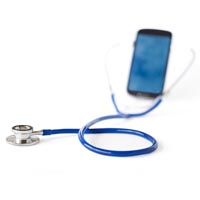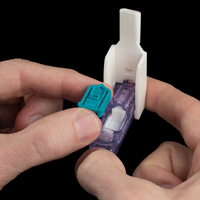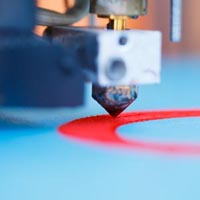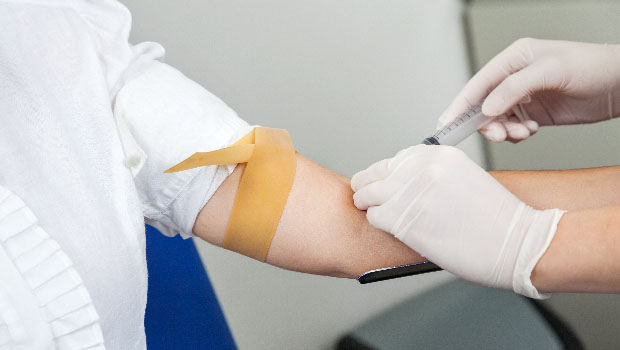The Top 10 Diabetes Breakthroughs of 2014

From artificial pancreas trials to stem cell breakthroughs, 2014 was a big year for Type 1 diabetes news. Insulin Nation has compiled 10 big ideas in treatment and technology from the past year:
1. Distance Monitoring Went Mainstream
 A report released in June found that some 3 million people are having their medical conditions monitored remotely, and that number should jump to 19 million in the next four years. No word on how many of those 3 million were people with diabetes, but Dexcom won FDA approval in October for an add-on to the G4 Platinum continuous glucose monitor (CGM) to allow users to share their blood glucose readings with up to five followers.
A report released in June found that some 3 million people are having their medical conditions monitored remotely, and that number should jump to 19 million in the next four years. No word on how many of those 3 million were people with diabetes, but Dexcom won FDA approval in October for an add-on to the G4 Platinum continuous glucose monitor (CGM) to allow users to share their blood glucose readings with up to five followers.
It has been a busy year for Dexcom as…
2. Continuous Glucose Monitors and Pumps Started Talking to Each Other
 Dexcom’s G4 Platinum CGM gained a new dance partner when the Animas Vibe pump was approved by the FDA in December. The Vibe is designed to be paired with the G4 Platinum in a way that the CGM can feed numbers directly to the pump. In June, Europeans got their first taste of a pump/CGM integrated system when the Medtronic Duo was approved by European regulators.
Dexcom’s G4 Platinum CGM gained a new dance partner when the Animas Vibe pump was approved by the FDA in December. The Vibe is designed to be paired with the G4 Platinum in a way that the CGM can feed numbers directly to the pump. In June, Europeans got their first taste of a pump/CGM integrated system when the Medtronic Duo was approved by European regulators.
With so much going on in wireless medical monitoring, those in the know predicted Apple would jump into the market. Their hunch was right when…
3. Apple Unveiled its iHealth/Healthkit Platform
The iHealth platform and the Apple Watch were unveiled in September, but since then Apple has had to fix a lot of bugs. Meanwhile, some diabetes advocates were disappointed that the Watch was not designed to measure blood glucose readings, as had been rumored. Also, U2 did not appear to unveil iHealth, which disappointed some, but not others.
We’ll know more about iHealth’s impact in 2015. We’ll also know a lot more about another potential diabetes game-changer since…
4. Afrezza Finally Received FDA Approval for its Inhalable Insulin System
 After years of hitting a brick wall with the FDA, Mannkind finally got approval to sell Afrezza and the Dreamboat insulin inhaler in June. Just like the dog that finally catches the car, however, Mannkind quickly had to figure out how to market Afrezza successfully; the last attempt at inhalable insulin was a commercial failure. The company eventually signed an agreement to partner with Sanofi, the makers of Lantus, to co-market Afrezza.
After years of hitting a brick wall with the FDA, Mannkind finally got approval to sell Afrezza and the Dreamboat insulin inhaler in June. Just like the dog that finally catches the car, however, Mannkind quickly had to figure out how to market Afrezza successfully; the last attempt at inhalable insulin was a commercial failure. The company eventually signed an agreement to partner with Sanofi, the makers of Lantus, to co-market Afrezza.
Sanofi might have been eager to branch out from its traditional insulin business as….
5. Lilly is Trying to Come Up with an Answer to Lantus
The two biggest producers of insulin spent a lot of money on attorney fees in 2014 as they duked it out in US courts over a patent dispute. Sanofi has been trying to block Lilly from selling a biosimilar version of Lantus; Lilly has already received approval to sell this new long-acting insulin in Europe.
Meanwhile, heads have been rolling at Sanofi as the company’s corner on the long-acting insulin market is crumbling. Not only are Sanofi’s competitors coming up with their own long-acting formulas, but the patent on Lantus is running out. Not even news of successful trials of a new formula of Lantus could save the job of Sanofi’s CEO.
Sanofi best not try and make up its profit margin in test strips as….
6. A Startup Has Figured Out a Way to Print Test Strips for 5 Cents a Piece
 Clemson University-based entrepreneurs have hacked a printer to print test strips on the cheap. No word on how accurate the readings of the strips might be, but it could prove a huge game-changer for people with Type 1 diabetes in the developing world. If this technology proves to work and turn a profit, it might make it rain test strips in the near future.
Clemson University-based entrepreneurs have hacked a printer to print test strips on the cheap. No word on how accurate the readings of the strips might be, but it could prove a huge game-changer for people with Type 1 diabetes in the developing world. If this technology proves to work and turn a profit, it might make it rain test strips in the near future.
Another thing it might be raining soon is stem cells as….
7. A Harvard Researcher Found a Way to Turn Stem Cells into Beta Cells
 Stem cell therapy for diabetes was dealt a major setback in April as a breakthrough stem cell-growing technique from Japan was revealed to be a fraud. Optimism for the therapy was renewed, however, when Harvard researcher Dr. Douglas Melton announced in October his team had devised an efficient way to turn immature stem cells into insulin-producing beta cells.
Stem cell therapy for diabetes was dealt a major setback in April as a breakthrough stem cell-growing technique from Japan was revealed to be a fraud. Optimism for the therapy was renewed, however, when Harvard researcher Dr. Douglas Melton announced in October his team had devised an efficient way to turn immature stem cells into insulin-producing beta cells.
Some newspaper headlines angered the diabetes community by declaring this new technique a cure for Type 1 diabetes. Advocates correctly pointed out that the shortcoming of beta cell transplants is that the body of a person with Type 1 diabetes remains really good at killing all the beta cells it finds. Luckily….
8. An Israeli Company is Testing a New Way to Keep Implanted Beta Cells Alive
Beta-O2 is conducting a trial on a “safehouse” for implanted beta cells that includes injected oxygen to keep the cells alive. This research, along with many other attempts at encapsulating and protecting transplanted beta cells, is being funded by JDRF.
Beta cell transplantation is one big prize for diabetes researchers, but another is a completely closed-loop artificial pancreas pump system. To make that happen, however, you would need room temperature-soluble glucagon. It just so happens that….
9. Xeris Announces it May Have Figured out Room Temperature Glucagon
Glucagon, it’s not just for emergencies anymore? Xeris Pharmaceuticals announced in June that tests seem to indicate that it has come up with a glucagon that won’t degrade at room temperature. This is not just one pharma company’s pipedream; Tandem has said this year that it is working to create “hormone-agnostic” pumps that could take insulin and glucagon.
Tandem’s pumps have been the go-to pumps for artificial pump researchers in 2014. Their pumps have been keeping busy because….
10. The Artificial Pancreas/Bionic Pancreas is Getting Strapped onto People…For Real
 It seemed as though you couldn’t go to a diabetes summer camp in 2014 without running into a researcher with an artificial pancreas to try. Boston University researcher Ed Damiano revealed that his team’s trials of a closed loop artificial pancreas that used both glucagon and insulin went extremely well. Also, JDRF UK reported in April that teens were given smart pumps that automatically adjusted insulin levels based on readings from CGMs. Similar trials are also underway at the University of Virginia. All the news from these types of trials has been positive.
It seemed as though you couldn’t go to a diabetes summer camp in 2014 without running into a researcher with an artificial pancreas to try. Boston University researcher Ed Damiano revealed that his team’s trials of a closed loop artificial pancreas that used both glucagon and insulin went extremely well. Also, JDRF UK reported in April that teens were given smart pumps that automatically adjusted insulin levels based on readings from CGMs. Similar trials are also underway at the University of Virginia. All the news from these types of trials has been positive.
It’s great to hear about successful trials, but it’s even better when there are signs that pump and CGM manufacturers are gearing up for the artificial pancreas market. Alongside Tandem’s efforts to create a dual-chamber pump, Medtronic is testing a pump that can predict and react to trends in blood glucose levels. Also, Dexcom won FDA approval to incorporate into its CGM the same algorithm that’s used in the artificial pancreas.
It’s been an exciting year in diabetes technological advances, but so far we haven’t found a way to do away with the daily bloodletting and injections. Here’s hoping for even better news in the coming year.
What do you think will be the biggest breakthrough in 2015?







